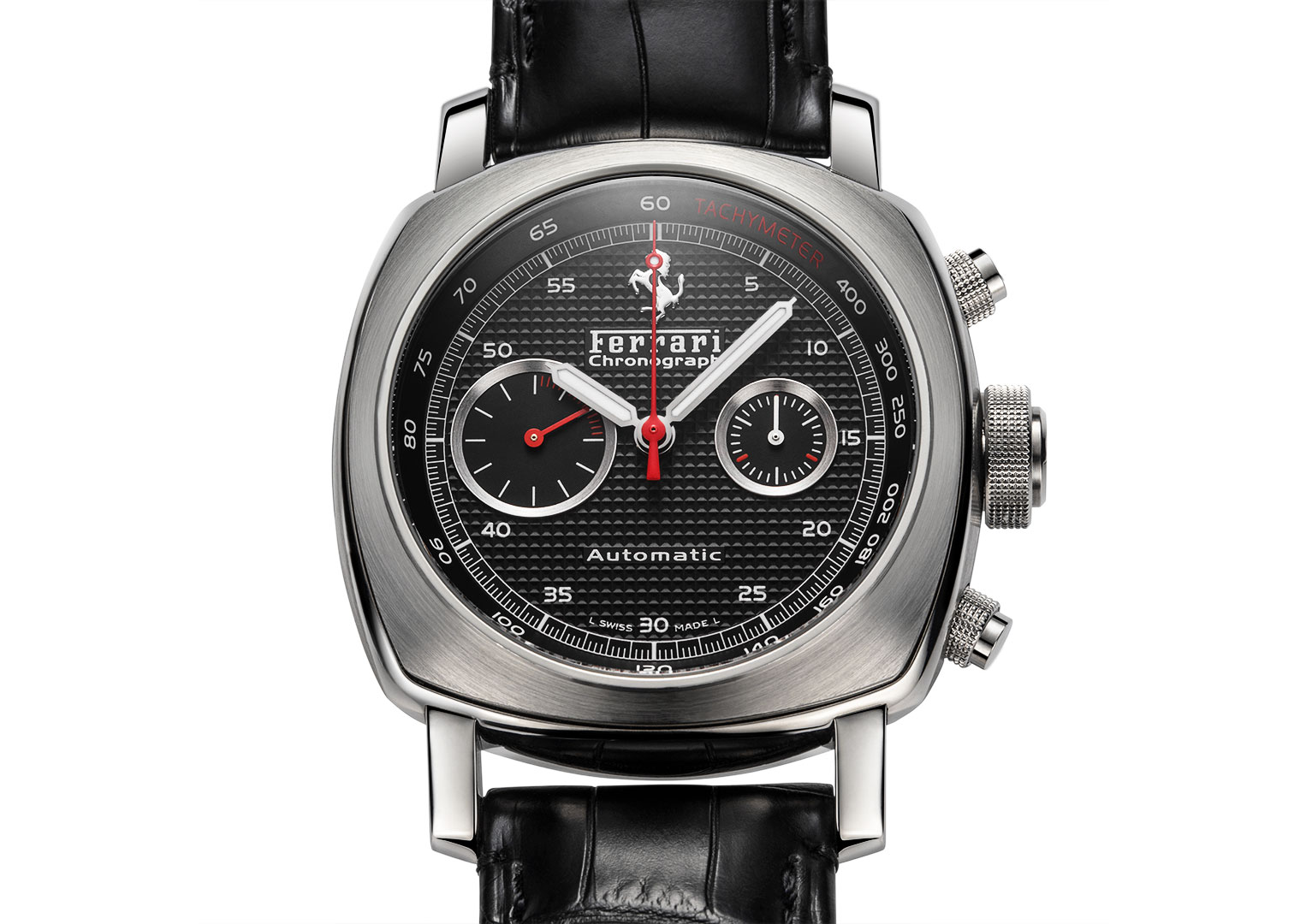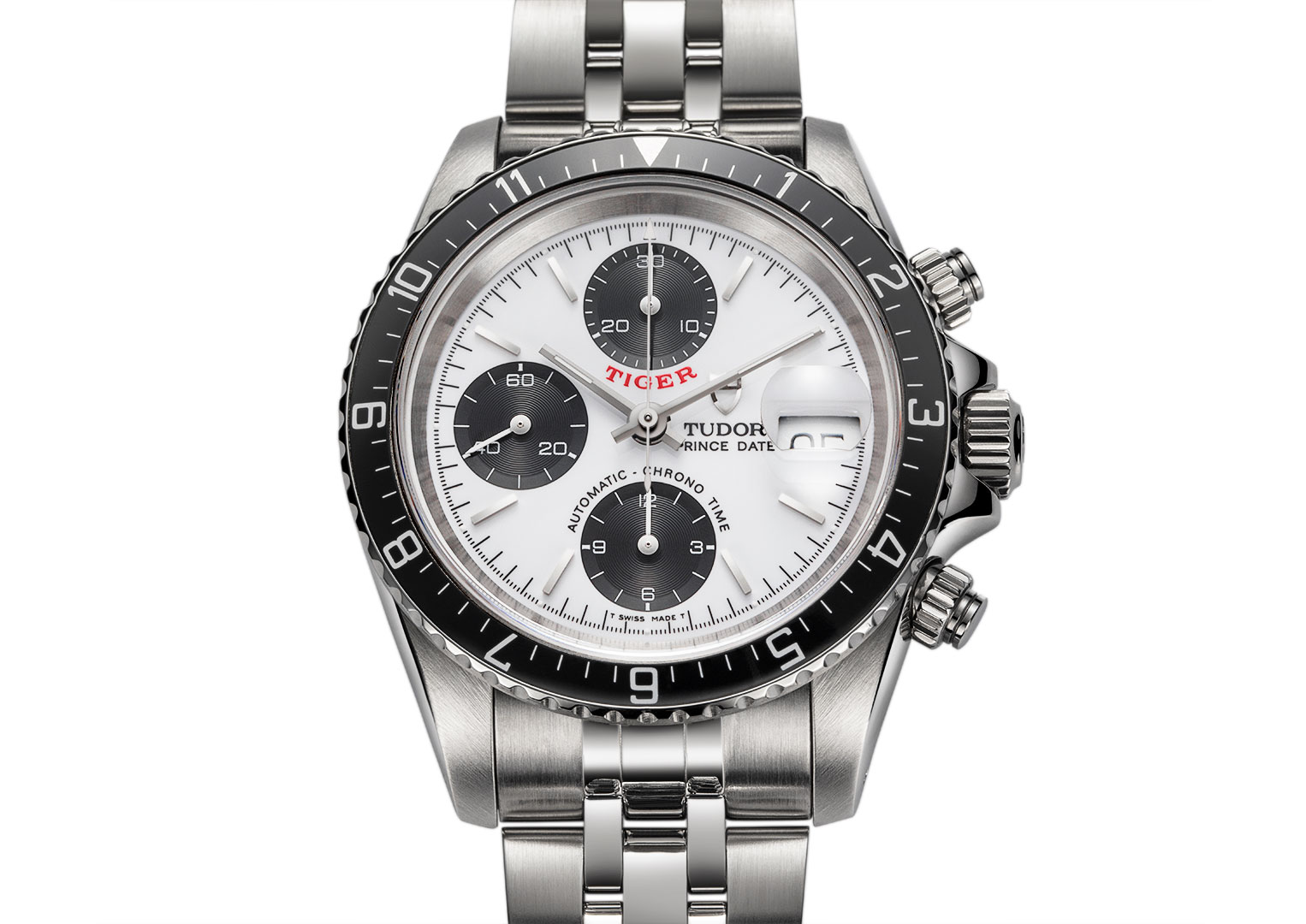Feature: 3 Investment Watches
If there’s a word we hear all too often in the context of watches these days, it’s investment. A ballooning market, product scarcity and a boat load of hype has made watches that used to be readily available—and affordable—out of reach for the vast majority of us. But that doesn’t mean we can’t get in on that action, because there are still a few more affordable watches that just might be worth hopping in at the ground floor on.
Panerai Ferrari Granturismo Chronograph FER00004 - £3000
What better partnership could there be than between flamboyant Italian luxury car manufacturer Ferrari and flamboyant Italian luxury watch manufacturer Panerai? Well, apparently quite a few, because in 2005 when Panerai and Ferrari signed a deal to collaborate on a series of watches, no one cared. Around thirty different watches were created, from your basic time and date Granturismo Automatic all the way up to the hallowed Perpetual Calendar, and plenty in between.
Panerai took the Ferrari baton from Girard Perregaux, and handed it on to Hublot five years later, but somehow the pairing of these two Italian greats never quite seemed to gel. This Granturismo Chronograph was one of those watches left sad and unadopted in a jeweller’s window, unloved and unappreciated for over a decade.
It’s hard to say specifically why these Ferrari watches never really took, especially as Panerai was booming in the same period. Perhaps it was the lack of Panerai branding, the dial entirely dominated by the prancing horse motif. Perhaps it was the lack of in-house movement, the calibre OP XII built on an ETA base—although that was very common of the era. Maybe the 45mm size, an extra millimetre over Panerai’s Luminor, was just too much for this chunky watch.

Panerai and Ferrari worked together between 2005 and 2010
Whatever it was, it seems to have since been forgotten, because interest in this watch—and others in the range—is starting to grow. Since the introduction of in-house movements in the Panerai collection, prices have correspondingly increased—and that’s dragged residuals up with it. Now, the cheapest way to own a Panerai is one of these Ferrari watches—even if you do have to look at the back to find mention of the watchmaker.
It’s a well-kept secret laden with little details that make the watch in itself one well worth having. The hobnail dial is a carryover from other Panerai watches and a firm collector favourite, and the screw-down crown with self-levelling mechanism is a trick that so many other watches shouldn’t really be without. The tachymeter scale and bi-compax layout with red detailing certainly sell the watch’s racing intentions—that and the big Ferrari badge emblazoned on pretty much every surface.
Right now, a Panerai Luminor with an ETA-based chronograph movement will be asking somewhere in the mid-£4,000 mark. The Panerai Ferrari Granturismo Chronograph? More like £3,000. That’s a bargain that’s not going to stay a bargain for too much longer.
Tudor Prince Oysterdate Chronograph 79270 - £5000
Imagine being one of those guys who bought a Rolex Daytona back in the day for peanuts. Sitting on a goldmine all these years, only to find out the old Rolex they’d forgotten about is now worth more than their house. It happens, but it won’t be happening to you or me, that’s for sure.
How’s this for a consolation prize then? A vintage Rolex chronograph that’s on the up that can still be purchased for over £2,000 less than a new Submariner. And better yet, it’s a watch you can actually go and buy. You don’t need to be on a list, you don’t need to purchase any unsellable stock in order to receive consideration—you can simply hand over the cash and its yours.
Sounds too good to be true; I assure you, it’s not. Well, it’s pretty much true, as long as by Rolex, you realise I mean Tudor, by vintage I mean twenty-five–ish years old and by chronograph, I mean a workhorse movement from supplier ETA. For those not familiar, Tudor is a Rolex-owned and founded sub-brand that offers most of what you get from a Rolex, but at a more affordable price. Despite a lull in the late nineties, early thousands, Tudor is now hot property once again, and this Prince Oysterdate Chronograph is prime investment material.

The Tudor Prince Oysterdate Chronograph at £5,000 is more than four times cheaper than the Rolex alternative: the Daytona
It may not be from the 1960s, but a quarter-century is no spring chicken. There’s tritium lume, a free-turning twelve-hour bezel and skinny print on the date wheel, all calling cards of a watch on the right side of the millennial divide to be called vintage—or at least pre-vintage. As if solely to demonstrate the generational gap between this watch and now, the ‘Tiger’ branding on the dial refers to champion golfer Tiger Woods—from the first time around. He’s had many models since.
Being £2,000 less than a Rolex Submariner, that bit’s one hundred percent true, however. This is a Rolex-made case, Rolex-made bracelet—you’ll recognise the hollow links and rattly clasp—and although it doesn’t get a Rolex movement, it’s still every bit a member of the golden coronet’s family. With the date window, a feature absent on the sister Rolex Daytona, it’s even a bit more practical, too.
Thing is, these used to be even cheaper, but interest in Rolex, new and vintage, and increasing interest in Tudor has given this watch the makings of a solid future investment. Okay, so you won’t likely be able to pay off your mortgage with it, but hopefully it’ll look after you well—so long as you look after it.
H. Moser & Cie. Endeavour Centre Seconds 343.505-013 - £9000
Fancy yourself an entry-level F.P. Journe? I hope you’ve got a spare £20,000 going, because that’s what a watch from that particular multi-award–winning watchmaker will cost you. That’s if you can get one—the Chronomètre Bleu, for example, may be at the less expensive end of the brand’s collection, but the waiting list didn’t seem to get the memo. You’ll be jumping through some hoops to get hold of that one.
How about a Laurent Ferrier then? Former Patek Philippe creative director, Laurent Ferrier went out on a limb in 2010 and started making watches under his own banner instead. He must be doing well, too, because you’ll be paying him at least £35,000 for the privilege.
There’s Philippe Dufour as well. Don’t even ask about that. I don’t care how rich you are, you can’t have one. They’re all sold. I mean it. All of them. Gone. The point is that this slowly bubbling fascination with watchmakers that operate in small numbers and extremely high quality, whose names you won’t see at the tennis or the golf, is about to boil over. Collectors are looking beyond the big names to a generation of watchmakers who are so in the most traditional sense: people who have dedicated their lives to designing and making watches.
But it’s a shame that these watches are the sole delight of the wealthy collector, who has the privilege to both expand their bank account and enjoy themselves whilst they do it. Don’t shed a tear, however, because if you can muster £9,000, you’ve got a chance of entering that very same club.

All H. Moser & Cie. watches are made in Schaffhausen, Switzerland
Alright, alright, so £9,000 is hardly affordable in the broadest sense of the term, but for what we’re looking at here, the H. Moser & Cie. Endeavour Centre Seconds, it’s pretty much armed robbery. Renamed more times than New Coke, the Endeavour was formally known as both the Mayu and the Monard, coming together under the new banner in 2017 after a bit of organisational housekeeping.
But enough admin—it’s the watch itself we’re interested in, whatever it might be called. Here’s what you’d want to know if this were a game of top trumps: solid gold case, in-house movement, hand-finished details. To expand on that, the gold case gets trademark H. Moser & Cie. sculpting on either side, making it instantly recognisable; the calibre HMC343 is hand-wound with seven days’ power reserve and a completely unique interchangeable escapement with gold pallet fork and escape wheel; and the finishing is quite simply out of this world.
Huge screwed chatons reign in the torque of the twin mainsprings, separated by bridges whose bevelling is polished to a mirror shine and whose surfaces are striped in a pattern unique to H. Moser & Cie, all sitting atop a compendium of cogs and wheels that glisten when caught by the light. From the blued power reserve hand to the hacking screwed balance, it’s a level of watchmaking that shouldn’t be anywhere near a four-digit price—especially not from a small outfit like H. Moser & Cie.
This is an underappreciated watch. The fact that one can be purchased for £9,000 is a testament to that. But with watchmakers like F.P. Jorne and Laurent Ferrier fast becoming just as unattainable as the Rolexes and Patek Philippes collectors transitioned from, it won’t be long before H. Moser & Cie. follows—and if it doesn’t, then at least you’ve got yourself one fantastic watch to commiserate yourself with.
It’s a tricky game speculating what might be worth a whole lot more in the future. Of course it is—that’s why not everyone does it, and why many people who do, fail. But these three watches, whilst they may not be a sure thing, all have a whiff of the familiar about them, a flavour tasted before in the watches that are now the residents of more safes than wrists. You have to be sensible, and buying anything in the hope that it will make you money is always a risk—but at least with these three affordable investment watches, you can have a bit of fun along the way.
Looking for a Panerai watch? Click here to shop now
Looking for a Tudor watch? Click here to shop now
Looking for a H. Moser & Cie. watch? Click here to shop now




